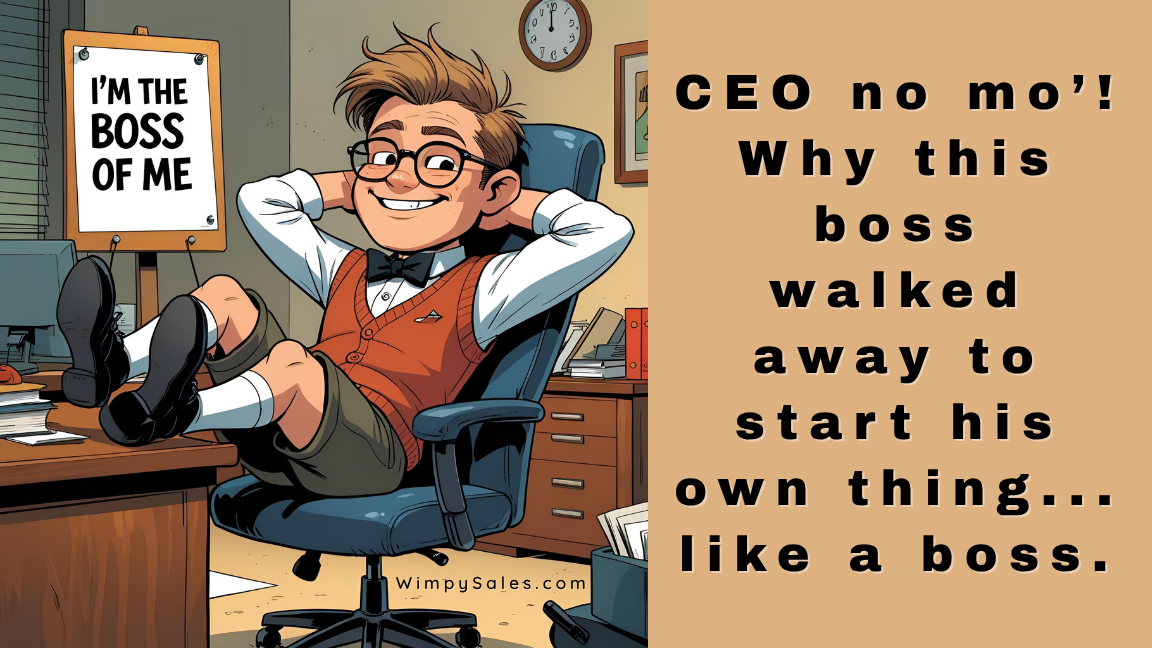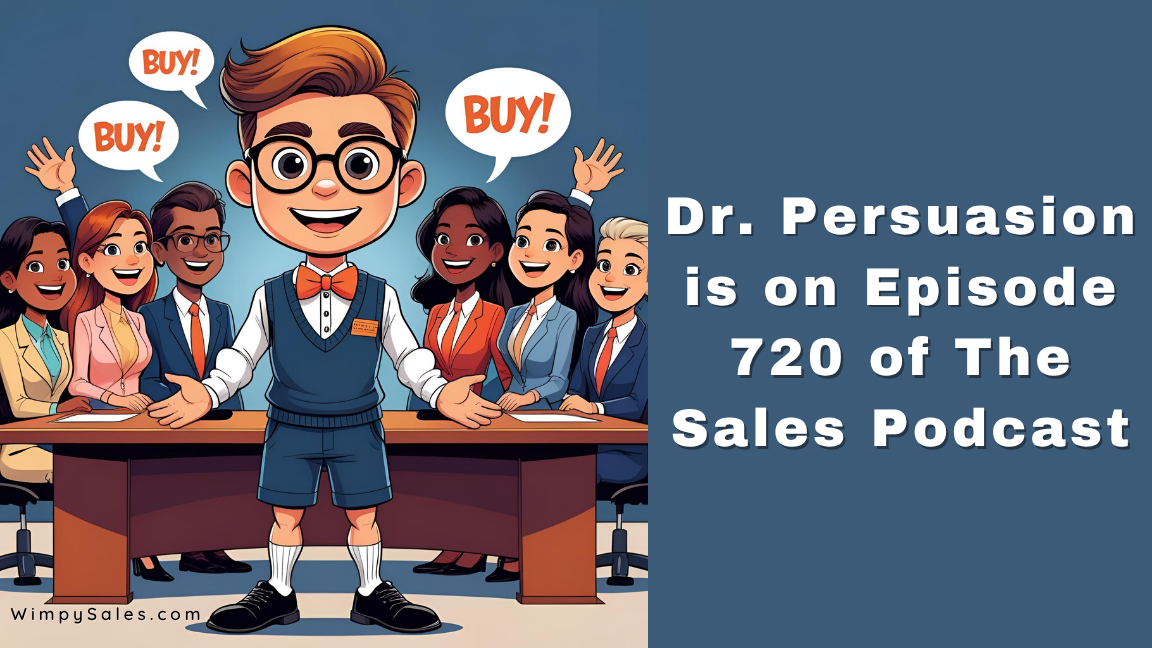
HubSpot vs. Keap: Who Has The Best Marketing Automation?

HubSpot vs. Keap Is Really Apples & Oranges...
When I first wrote this comparison, I said it felt like
- Superman vs. Batman
- Mercedes vs. BMW
- Single Malt vs. Blended Whisky (If you're buying, I'll have what you're drinking.)
HubSpot vs. Keap Index
- The Keap CRM (Infusionsoft) Growing Pains
- Overview
- Monthly
- Culture
- Pricing
- Support
- 2022 Updates
- Current Users
Related Articles
Why I Still Use Both HubSpot & Keap (But it's a terrible idea for you!)
On Sept 30, 2014, after five years of consideration—and six years of exclusively supporting the Keap (Infusionsoft) platform—I became a HubSpot Partner.
(In October of 2014, I got my Ontraport certification, which I discuss in Ontraport vs. Infusionsoft.)
(In November 2015, I moved my 8+-year-old website with 220 pages and 700+ posts from WordPress to the HubSpot COS to host my entire site, but that's another topic for another series of WordPress vs. HubSpot posts.)
Why did it take you so long to move to HubSpot, Wes?"
I have to admit that not fully understanding the HubSpot offering and appreciating its power led me to be a bit harsh in my early reviews of HubSpot.
No platform—Keap, HubSpot, Ontraport, etc.— is right for everyone.
None of these CRMs, Marketing Automation, Sales Force Automation, e-commerce, Affiliate Marketing, etc., are truly all-in-one.
This is why you need to document your Process Before Login.
But I digress.
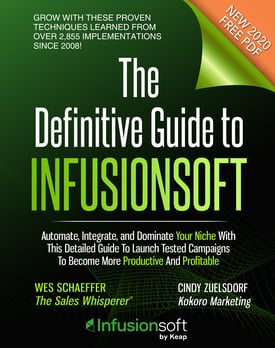
By focusing on Keap and going all-in on them since the Fall of 2008 (when they were Infusionsoft), I built a healthy business that I still run from home, and I could not have done it without the power, the support, and the community of the Keap family.
After working so long and hard inside the Keap platform—and writing a 700-page Keap CRM Book—I have fully experienced the benefits and the limitations of Keap.
Keap Growing Pains
In 2014, Keap still worked exactly as advertised...but they weren't keeping up with the competition.
In fact, they had flat-out stalled insofar as new features and stability, yet they raised their prices and reduced their contact and email counts for new users. Ugh!
The world needed Keap 3.0, but they were stuck on Infusionsoft 1.0...and it showed.
So I took a long, hard look at not only Keap but how I wanted to structure and grow The Sales Whisperer® moving forward.
I realized I had too many eggs in the Keap basket, which led me to get certified in both HubSpot and Ontraport in late 2014.
In fact, back in December 2016, I was one of only a few partners in the world who had all 12 HubSpot certifications. (They've added many more since then, which is another reason I love HubSpot. Their training is literally second to none in the CRM space.)
As of September 2024, I'm heavily reliant upon the HubSpot ecosystem, and despite their price increases, even small businesses and solopreneurs can generate a positive ROI with HubSpot, but you have to buy intelligently because everyone is raising their prices and lowering their contact and email allowances, even Keap.
HubSpot had a hiccup from late 2021 to late 2022, but they have pulled out of that nosedive.
They have managed to do what few SaaS platforms have: offer great value and features to both small and large clients.
(See HubSpot vs. Keap: The True Total Cost of Ownership )
Looking back on when I bought my domain name in September 2006, I wasn't ready for HubSpot. (I also hadn't heard of them, and they were mainly an SEO company back then, so I have that in my defense!)
After two years of cold calling and knocking on doors, I found myself back in Corporate America when the Big Collapse hit, but I was still building my own business.
In the summer of 2008, when I met Dan Kennedy in the Anaheim Convention Center during Infusionsoft's four-city marketing tour, Infusionsoft's energy, enthusiasm, and optimism—along with their sales and marketing automation platform—was exactly what I needed.
In time I...
- wrote an Keap CRM Book,
- create the Infusionsoft Cheat Sheet ,
- became one of the few Platinum Plus resellers in the world, and
- was named Infusionsoft Partner of the Year in 2013.

But now I see the content-creation and analytics and reporting, and lead-capture tools HubSpot offers, and I'm excited to leverage them to grow even faster.
With that said, thanks for visiting this page, and enjoy this updated post on HubSpot vs. Keap.
HubSpot vs. Keap
When I first started writing this analysis on HubSpot vs. Keap back in August 2013, I thought it was like comparing Mercedes vs. BMW, and in a way, it was and still is.
Both HubSpot and Keap offer strong sales and marketing solutions, and if you use even a fraction of what each offers, your business will be better off.
However, the more I dove into this analysis, the more I realized that the Mercedes vs. BMW comparison was not totally accurate.
HubSpot vs. Keap is more like comparing an X-Ray to an MRI or a Bellhop to a private Concierge.
Both have their place, and both serve an important need at different price points.
In these analogies, Keap is the X-Ray or the Bellhop, while HubSpot is the MRI/Concierge.
Both Keap and HubSpot require an up-front training investment.
- Keap is $499 for setup, while HubSpot is $3,000 to $6,000 for setup
- Keap ranges from FREE to $59 to $199/mo with discounts if you pay annually, but they do not require an annual contract
- HubSpot also has free options, as well as $890 - $3,200 per month packages, but as soon as you get into their paid packages, you must sign a one-year agreement with discounts if you prepay.
While both Keap and HubSpot offer inbound sales and marketing automation, they go about it in dramatically different ways.
HubSpot charges a healthy sum for convenience, good great analytics, elegant tools for creating your content such as emails, lead magnets, and landing pages, and great 24/7 phone support.
HubSpot also requires you to prepay for a year (or at least commit to a one-year agreement), and that can be a big pill to swallow for many small businesses (and it's why I didn't pull the trigger on their software for FIVE YEARS!)
But you and I both know that entrepreneurs can be a flighty group, and sometimes we just need to dig deep, pay until it hurts, and use that big credit card statement as an attention-focusing tool that makes us stick with one thing to realize an ROI because doing 37 things to 90% completion just leaves you tired, frustrated, and broke.
Case In Point: I have helped more than a few entrepreneurs switch from Ontraport to Keap over the years.
Why would someone switch email marketing platforms?
One of the biggest reasons people switch from Ontraport to Keap is because Ontraport offers a free trial, a 90-day refund when you start, and no setup fee.
So shiny-object-chasing, easily-distracted entrepreneurs jump into Ontraport, literally expecting not to use it.
They are LOOKING for reasons not to like it and not pay for it.
And guess what?
They find those reasons and start looking for greener grass...
But only after wasting 90 days with something that didn't meet their needs.
So these ever-hopeful, magic-pill-seeking entrepreneurs come to me, pay the $499 Keap Kickstart, and get the help and the tools they need to grow.
This is why I've always been a fan of charging a decent amount for a great tool, great support, and great training with the help of an expert with decades of experience.
Previously, I compared HubSpot to RedHat, which makes money helping people with the free OS and Linux, but HubSpot offers a lot more than that.
After working with my free trial of HubSpot back in 2014 (which HubSpot no longer offers but Keap does now offer) and now using it daily for close to a decade, my eyes were opened as to just how much more powerful the HubSpot reporting and analytics tools are.
HubSpot is much more than just a Yoast WordPress SEO plugin or an SEOMoz account.
It's also fully integrated with your content creation and fully supported 24/7 with live phone support!
How much will you pay for support for your "cheap/inexpensive" WordPress site?
I know I've had overseas VAs, U.S.-based VAs on retainer, all-you-can-eat support (but only via email and only one support ticket at a time), full-time staff, and contractors, and I can tell you I've lost a lot of money and a lot of sleep and a lot of visitors and leads on my site by not having the best support and advice when it comes to keeping my site up and running.
That's why I pay for the HubSpot platform, including their hosting and CMS for my blog and website. There is no substitute for live, real-time, quality support when you need it.
Keap Month-to-Month Contracts
Keap, on the other hand, has always offered month-to-month agreements.
I've actually encouraged Keap to go to annual contracts, which is what HubSpot has offered for as long as I've known and used them, because it shows both commitment by you, the entrepreneur, and it also forces you to focus, which we can all benefit from in everything we do in life.
However, despite this more affordable approach to bringing on new clients, I still see too many people cancel Keap both after a short time—like during their 30-day Kickstart—and even months and years later because they just aren't using the software.
(That being said, I also just signed up a client on Keap who was not renewing her HubSpot Professional edition because it was overkill for her business. Like I said at the beginning, there is no perfect tool for every entrepreneur and business, but you will have a positive ROI on any CRM/Marketing Automation/Inbound Marketing tool if you use it. Need to find the best CRM for you? Take my free Best CRM Quiz.)
Creating, running, and building a business is hard work.
Any powerful, business-multiplying tool will cost some money and take some effort to learn.
So what you need to look at when you compare any sales automation/marketing automation platform includes...
HubSpot vs. Keap Company Culture
HubSpot is a huge corporation worth billions of dollars headquartered in a big, historical East Coast city within walking distance of Harvard.
While their stock took a BEATING as mentioned above, since their lows of October 2022, they have rallied and still have sharp, optimistic people on staff, and they support their clients and partners well via in-person and remote gatherings, on-demand content, calculators, templates, and a myriad of other tools.
Keap has had its own beatings, albeit different since it's still a private company.
Both HubSpot and Keap are run and staffed by passionate, motivated professionals who are committed to helping entrepreneurs grow, and I like what I've seen and experienced with both.
HubSpot vs. Keap Pricing
Affordability/ROI—I've touched on this a bit and will offer more insight below, but you are looking at coming up with at least $3,000 upfront for HubSpot, and you could easily get into the $15,000 to $22,000 range for your first year of HubSpot ownership. (I've had clients spend over $60,000/year on the software plus another $36,000 on support, but this was a $6 million company that doubled the year we worked together.)
With Keap, you're looking at about $499 upfront and monthly service access fees ranging from $79 to $299/mo with additional charges for more users and/or more emails/contacts, which could add $50 - $350 more per month.
So, over the course of 12 months, you could spend $0 on Keap's free offering, $1,207 on Keap's Lite package, or up to $2,887 for Keap's top package, "Max."
So if Keap offers exactly what you need right out of the box with no customization, it is obviously more affordable. (I've used it to build a half-million-dollar business with no employees, no sales staff, and almost no advertising, but I had to learn a lot of things on my own.)
But if you need more help on the inbound marketing side of things and you need more help and training in creating that content, testing your Calls-to-Action, measuring everything you do in that regard, and getting detailed reports on your marketing efforts, the extra money for HubSpot could be justified.
HubSpot vs. Keap Support
Live support and documentation—Both have solid documentation, and HubSpot offers live phone support 24/7, which is A-MA-ZING!
Keap offers live chat support 24/7 to augment their live phone support during the day, Monday to Friday.
Ease-of-use—both have steep learning curves if you are brand new to this type of technology, but as a certified partner of both HubSpot and Infusionsoft, we follow their setup programs to get you up and running quickly.
HubSpot is teaching advanced concepts as it pertains to mastering Inbound Marketing.
This includes blogging, social media, landing pages, lead magnets, calls-to-action, A/B split testing, then measuring, monitoring, and then adjusting your offers to increase your results and help you automate your Attraction, Conversion, Closing, and Delighting. (I've learned most of this on my own, and it was an exhausting, grueling experience that I wouldn't wish on anyone.)
HubSpot has a powerful, flexible CRM as well as elegant integrations with the larger players in the CRM space, such as Salesforce.com, and the larger eCommerce players out there, such as Shopify.
Keap, with their built-in CRM, sales, and marketing automation functionality, and decent e-commerce option, is helping you automate 50-100% of your entire business, but they do not have a CMS (Content Management System) to help you create and measure the effectiveness of your inbound marketing.
The reason people quit Keap is that they don't have processes to automate and don't want to take the time and effort to document what they do or how they'd like to do it.
The reason people quit HubSpot is for the same reason.
While HubSpot puts a lot of things under one roof, you still have to take the time to create the content and the workflows and test and measure and monitor and adjust your results. (Whoever said owning and running and building your own business is a walk in the park lied to you.)
As you'll see in the three images below, I have sequences that completely automate the outbound/follow-up call process, long-term nurture sequences, and the entire sales cycle through the CRM functionality of Infusionsoft.
Let's say it takes 4 minutes to update a Contact's record after you leave them a voice mail, which includes adding the "Left VM" note, sending them an email saying "Sorry I missed you. When can you talk?" and assigning yourself a Task to call them a day or two later.
If you have just two salespeople making 30 calls a day, that's
- 60 calls times 4 minutes = 240 minutes or fours per day,
- 20 hours a week,
- 1,000 hours per year your two salespeople are wasting with menial tasks that they do not perform correctly 100% of the time.
What if it takes you and me 8 hours to customize a workflow/follow-up automation sequence that can be enabled via three clicks on one internal web form, as I show below?
Would you be happy with an ROI of 8 hours to get 1,000 hours per year back from your 2-person sales staff?
If you're paying them $15/hr, that's $15,000 per year PLUS the additional sales they'll make because they're not forgetting to follow up.
Now, what if you could clone this follow-up sequence and tweak it for a different product or division within your company?
Now that 8 hours you spent in development originally is cut down to two hours to update the new sequence and your ROI is quadrupled.
So saying "Keap is hard to use" or "HubSpot is hard to use" is like saying "Excel is hard to use. I prefer a paper ledger and pencil."
Give me a break!
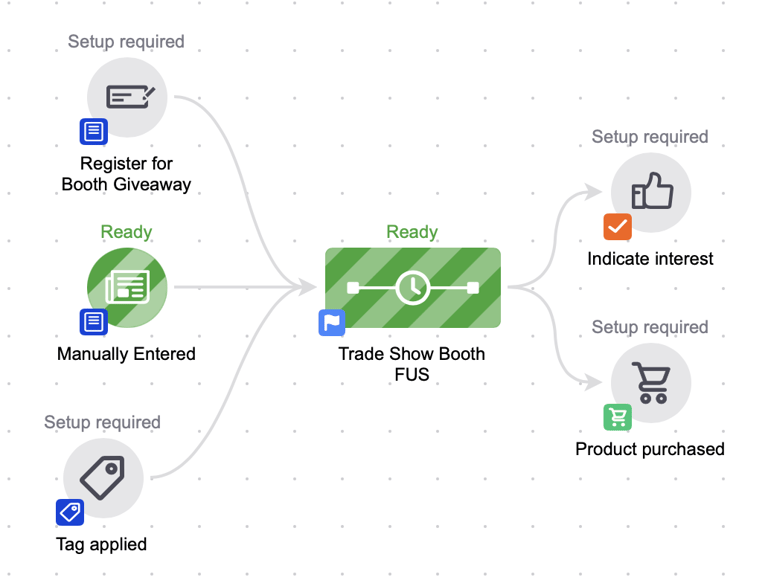
Keap CRM Sales Pipeline Example
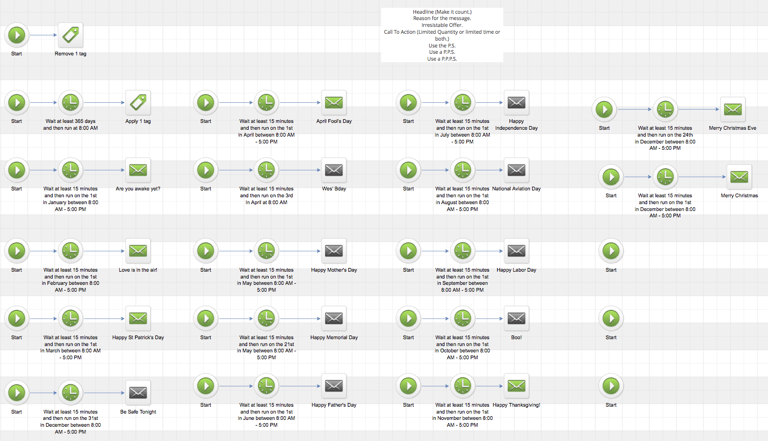
Keap Longterm Nurture Sequence Example

Automate Your Outbound Calling Sequence With Keap
HubSpot vs. Keap
After years of stagnation, Keap has finally come out with not only great updates to the platform but also rebuilt its software from the ground up.
Thus, the rebranding from Infusionsoft to Keap, which I'll get to in a moment.
But some of the changes Keap has rolled out between 2017 and 2024 include:
- A new, responsive Landing Page builder with elegant themes that is both powerful and easy to use
- WordPress Opt-in integration is more than a plugin for your analytics. It lets you create new opt-in web forms quickly and easily within your WordPress site. (Very cool!)

Since changing its release model in 2017, Keap has consistently rolled out new updates each month, such as:
- Many mobile app updates
- Mobile credit card reader
- Better Time Zone functionality
- Native Zapier integration for contact import
- BigCommerce integration
- Email builder improvements
- DKIM setup refinements
- Improved email-sending performance
- Increased security on orders
- PayPal update for Express Checkouts
- Filebox improvements
- Expanded International currency support, such as the Hong Kong Dollar and Vietnamese Dong
Likewise, HubSpot is always updating its application, and the list of updates for 2022 into 2023 is literally too long to list in its entirety, but some of the new HubSpot updates that stand out in my mind include:
- Accelerated Mobile Pages (AMP) to speed up your blog's performance
- Calling from Companies and Deals right from your CRM in the browser
- New web analytics dashboard
- Reinvigorated Tasks in the CRM
- OAuth 2.0 for developers
- CRM Extensions API and partnership with PandaDoc
- Live Chat for sales teams
- New reports for your dashboard
- Android App
- Easier to build dynamic pages with the HubDB (Bob loves this!)
- New social media tools
- New "unbounce contacts" button
- Automatically optimize videos hosted on HubSpot (this is huge)
- LinkedIn Sales Navigator integration with HubSpot CRM
As you can see, both HubSpot and Infusionsoft are not sitting on their heels. Stay tuned both here and to The Sales Whisperer® blog for more updates and insight on updates as they happen with both companies.
HubSpot vs. Keap For Current Users
If you own either of these platforms already and are only nibbling around the edges instead of going all-in on your business, stop reading now and commit to learning and mastering what you already own.
Check here to join the professional sales training program for live group training and a private group for real-time support.
If you need private help, Contact Me today, and we'll discuss what's right for you.
If you are still pondering which one to use for your business, take the Best CRM For Me free survey.
At the end of the day...
You're a busy entrepreneur with ADHD and Bright-Shiny-Object syndrome, so here's my (almost) unbiased recommendation after looking under the hood closely at HubSpot and using Infusionsoft since 2008 to grow my business and helping 2,355+ business owners do the same:
You need more of the right traffic, which you attract by creating great content with great offers that help you convert more window-shoppers into qualified leads that you can then nurture and bond and connect with to then make the sale and then over-deliver to then secure testimonials and referrals.
But ultimately, you need more sales. (I've never seen a business problem that couldn't be improved by doubling sales.)
Sure, traffic is a component of sales, but if you have a crappy site, crappier Calls To Action, and crappy follow-up, you won't be in business long.
Let's look at traffic generation for a moment.
HubSpot's main emphasis is on perfecting your "inbound marketing," which I love and support 100%, and it's how I built The Sales Whisperer®.
What put me off for so long on HubSpot was that I felt as though they were forcing me to pay THOUSANDS OF DOLLARS A YEAR, every year, upfront, to get help
- making a WordPress Page or Post,
- getting some social media ideas and
- tracking some analytics, you can get from Google for free.
But now I see they do so much more than that, and with the new HubSpot CRM, HubSpot makes much more sense for even smaller companies by not forcing you to pay for and connect that crucial component to your business.
I am not a "techie" or "geek" or "coder," but at the ripe young age of 39, while holding down a full-time job as I built my company, raising six (now seven) children with my stay-at-home wife who has home-schooled our kids since 2006, and coaching Little League and soccer, I self-taught myself WordPress and now have a site with 438 1,104 published Posts, 56 Landing Pages, and 53 published Pages with good SEO, good analytics, and enough traffic, leads, and deal flow to feed my family, keep a roof over our head, and take vacations in Hawaii.
Update 1/18: This site is my "money site," and I have since moved to the HubSpot COS to host my entire website, which you are reading now. However, many of my ancillary sites are still on the quite-inexpensive hosting mentioned above, although I am moving more and more of them to my HubSpot-hosted site.
HubSpot vs. Keap WordPress Page Creation
(Before moving to the HubSpot CMS-hosted platform after seven years on WordPress.)
HubSpot vs. Keap WordPress Blog Post Creation
(Before moving to the HubSpot COS-hosted platform after seven years on WordPress.)
Eventually, you get tired of adding "free" and "low-cost plugins" from the open-source WordPress community or other entrepreneurs who have "GUARANTEED LIFE HACKS," "blogging hacks," "social media hacks," and "e-commerce hacks."
Sure, some of the tools are cool, and they work as advertised, but who supports them?
What does site speed cost you, which impacts bounce rates, page views, time on site, and conversions?
What does it cost you in terms of breaking your site, which I did more times than I care to admit when you add a plugin or update a plugin that conflicts with another and turns your website into a white page of nothingness?
Look, I'm all for bootstrapping to launch and grow a business. It's how I launched The Sales Whisperer® in 2006. But you get what you pay for.
I shudder to think of the late nights, early mornings, and missed sleep due to doing things on the cheap when it came to building and growing my website as I mastered Inbound Marketing.
Yes, there are free online groups and cheap overseas VAs you can hire to learn some things and knock out some technical work—and I still use both to this day—but not to do my heavy lifting.
At the end of the next day, surround yourself with experts, motivated entrepreneurs with great mentorship and great support, and do it affordably, which is why I recommend you take a long hard look at HubSpot's free Sales, Marketing, and CRM stack.
If you can build a web form in MailChimp or connect a sequence in AWeber or add a contact into Outlook or Gmail, you can leverage the free tools from HubSpot to get started mastering and profiting from your own inbound marketing.
(Seeing this kinda reminds me of Steve Martin in "The Jerk" when he saw his name in the phone book. All of these keyword ideas for free!! I'm somebody now!)
Affordable Inbound Marketing is the name of the game.
Let's look at these two pieces separately:
Affordability: As mentioned above, there is the price you pay to buy HubSpot and buy Keap, and there is the price you pay to own them. See HubSpot vs. Keap: True Total Cost of Ownership.
Just because some tools offer free trials or waive the setup fees doesn't mean they are cheaper to own and operate.
Dig deeper into the platforms.
HubSpot offers many free tools, including its CRM, Marketing, Sales, Service, and Operations.
With those free tools, you have access to superb training and documentation, which I stand behind wholeheartedly.
So what's the most affordable inbound marketing platform on the market when it comes to HubSpot vs. Keap?
I guess it all depends on how you define affordable.
I can't tell you how many wantrepreneurs I've spoken to over the years who talked a big game but couldn't back it up and would complain about how "expensive" Keap was, even though it was not.
In order to reel you in, Keap has finally learned from HubSpot's example, which is...
- Start Keap or HubSpot for free, then...
- Add on a module here or a user there for a low amount as you get comfortable with the technology and come up with new ideas...
- Upgrade to a full-featured package and really kick off your marketing automation and inbound sales then,
- When you have clear, documented, proven processes in place, step up the highest package and remain a happy, profitable user for years to come.
E-Commerce: If you need to process orders online, you're looking at an extra expense with HubSpot compared to Keap since HubSpot has no native e-commerce option.
There are platforms like Shopify, which start at $29—and I highly recommend—which give you best-of-class e-commerce features and HubSpot is rolling out a free, native integration with Shopify, so this is quite exciting if you are looking for elegant, seamless integrations between your CRM, commerce, lead capture, email marketing, and marketing automation.
But the original or classic Keap e-commerce platform is far from best-of-class. I'd say it's somewhere between functional to pretty good.
That being said, I've had more 5-figure months with the Keap e-commerce platform than I can count going back to 2008, including generating over $54,000 a month while working from home BEFORE COVID made it acceptable to work that way!
So you can make a lot of money with Keap, but understand that it's not a utopia with either platform.
Automation: This is a tough nut for most people to crack at first because they've just never experienced it, so creating sales and marketing automation needs to be easy.
You build out your HubSpot automation with what they call Workflows, which is fine but not as intuitive as Keap's graphically-driven Campaign Builder, which I've shown above.
Both HubSpot and Keap offer internal workflows to make your staff more efficient, as well as marketing automation, which helps you stay in front of your prospects.
The difficulty people have when setting up HubSpot or Keap is not the actual software but the thinking that goes into mapping out their ideal process. (That's why I offer the free planning tool I call "Process Before Login.")
As I've shown above, Keap gives you the ability to tie your email marketing to your shopping cart to your CRM to your affiliate marketing to your direct mail marketing to your SMS marketing (via 3rd party integration) to your voice broadcast marketing to your fax broadcasting (yes, some people still use fax machines) to your sky-writing marketing (Just seeing if you're still paying attention...but I am looking into planes and blimps and big kites so stay tuned.)
With HubSpot, you'll need a couple of third-party tools like Shopify to process payments online and an affiliate tracking platform if you want to sell through affiliates.
Otherwise, HubSpot offers everything Keap does and does so more elegantly, with a nice user interface and a faster platform. (See "HubSpot vs. Keap: Which CRM Is Fastest?")
Tying all of that together will take a little elbow grease and brainpower, so it's a good thing we're here to help.
In conclusion...
Both platforms offer great business-building tools with different emphases and vastly different price points:
- HubSpot focuses on the top of the funnel/front of the pipeline by giving you frameworks for your social media and website content—but you still have to write the content to create the inbound marketing they—and I—say you need to grow. They also give you great analytics, elegant email templates, split-testing capabilities, superb training, and 24/7 live support.
- Keap offers a complete sales and marketing automation platform that includes CRM, Email Marketing, eCommerce, and affiliate marketing all under one roof and is found nowhere else at their *price point, along with good training and support. (*Salesforce bought ExactTarget—who already bought Pardot—for $2.5 billion in June 2013 to bring this type of integrated automation to big businesses that can spend $10,000 to $100,000 per month for CRM, email marketing, and automation.)
So when it comes to HubSpot vs. Keap, you may have a tough choice to make.
If you are a small to medium business with a small marketing budget, Keap now has a truly free plan as well as a Lite plan for as little as $75/mo, but it's really for solopreneurs and/or beginners.
HubSpot has a free plan to help you get started, and you can scale up slowly to $50/mo, then $800/mo, and they offer great training for an entire year with that package.
If you have the money for the "best" platform, you'll soon discover why HubSpot is considered the founder of "inbound marketing."
When it comes to speed, HubSpot wins hands down.
If you're still unsure which is right for you, contact me here, and let's discuss it.
I'll help you make the best choice for your unique situation.
Market like you mean it.
Now go sell something.






